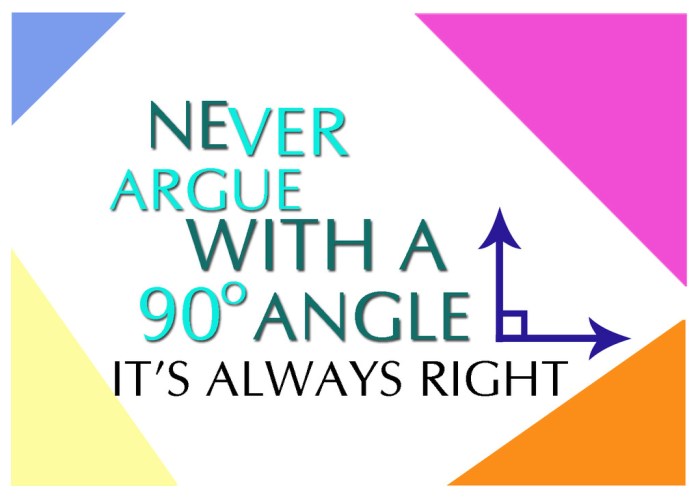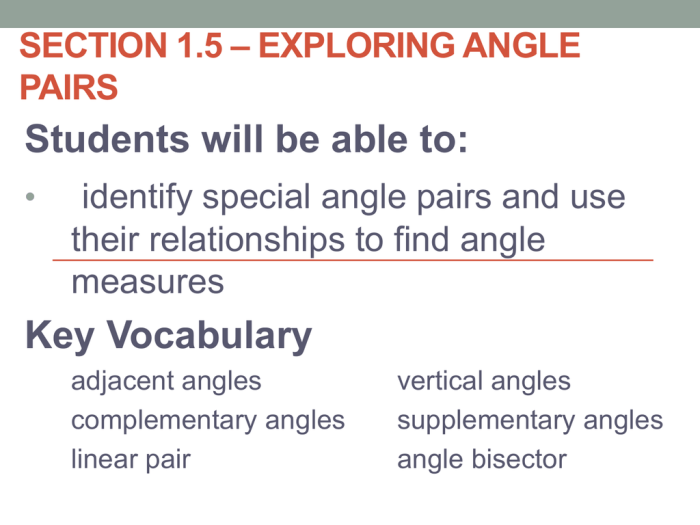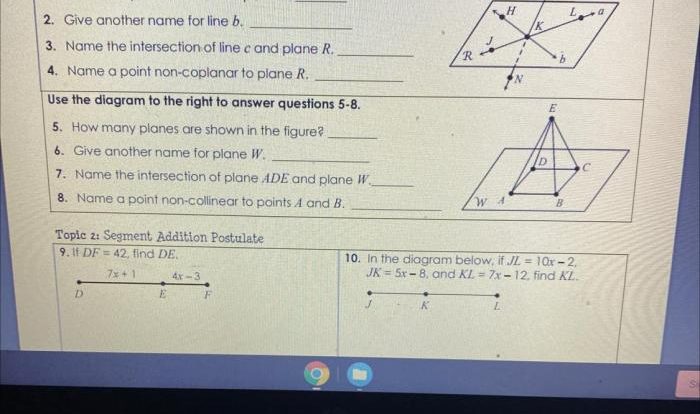Name an angle pair that satisfies each condition: Embark on a journey to unravel the intricacies of angle pairs and their diverse conditions, uncovering their practical applications and dispelling common misconceptions along the way.
Delve into the fundamental concepts of angle pairs, exploring their types, conditions, and real-world significance. Understand how angle pairs are employed in geometry and beyond, enabling accurate measurements and problem-solving.
Angle Pairs and Their Conditions: Name An Angle Pair That Satisfies Each Condition

Angle pairs are two angles that share a common vertex and a common side. There are four main types of angle pairs: complementary, supplementary, vertical, and adjacent.
Complementary anglesare two angles that add up to 90 degrees. Supplementary anglesare two angles that add up to 180 degrees. Vertical anglesare two angles that are opposite each other and share a common vertex. Adjacent anglesare two angles that share a common vertex and a common side, but do not overlap.
Identifying Angle Pairs, Name an angle pair that satisfies each condition
| Angle Pair Type | Condition | Example 1 | Example 2 |
|---|---|---|---|
| Complementary | Two angles that add up to 90 degrees | 30 degrees and 60 degrees | -45 degrees and 135 degrees |
| Supplementary | Two angles that add up to 180 degrees | 90 degrees and 90 degrees | -60 degrees and 240 degrees |
| Vertical | Two angles that are opposite each other and share a common vertex | ∠1 and ∠3 | ∠2 and ∠4 |
| Adjacent | Two angles that share a common vertex and a common side, but do not overlap | ∠1 and ∠2 | ∠3 and ∠4 |
Applications of Angle Pairs
Angle pairs are used in a variety of applications in geometry and other fields. For example, angle pairs are used to:
- Calculate the measure of unknown angles
- Determine whether two lines are parallel or perpendicular
- Construct regular polygons
- Solve problems involving triangles and other geometric shapes
Common Misconceptions
There are a number of common misconceptions about angle pairs. For example, some people believe that all adjacent angles are complementary. This is not true. Adjacent angles can be any measure, as long as they do not overlap.
Another common misconception is that all vertical angles are supplementary. This is also not true. Vertical angles can be any measure, as long as they are opposite each other and share a common vertex.
General Inquiries
What is an angle pair?
An angle pair is a set of two angles that share a common vertex.
What are the different types of angle pairs?
There are four main types of angle pairs: complementary, supplementary, vertical, and adjacent.
What are the conditions that each type of angle pair must satisfy?
Complementary angles must sum to 90 degrees, supplementary angles must sum to 180 degrees, vertical angles are always congruent, and adjacent angles are adjacent to each other and sum to 180 degrees.


